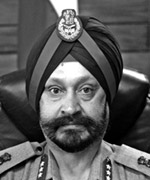Stand Up, Be Counted
 Lt Gen. HJS Sachdev (retd)
Lt Gen. HJS Sachdev (retd)
The Agnipath scheme was launched in June 2022, and I had put forward my analysis that same month with the finding that it was a ‘bad scheme, marketed badly’. Two years have since passed and there is a lot of feedback, views and opinions both in favour and against the scheme, mainly from the veterans’ community.
There is an extreme division in the opinions ranging from ‘path breaking reforms’ on one hand to ‘scrap it’ on the other. Never before has an idea seen such polarization amongst the veterans. The negative opinion and the public outcry against the scheme to now political exploitation by the opposition parties has once again reignited the debate and brought it back to the centre stage of public discourse. However, the most important factor that has forced the government and the armed forces to review it has been the political cost that the scheme has extracted in the recently held national elections. That is exactly what I wrote in my article Back to the Drawing Board that appeared in the July 2022 issue of FORCE.
It would be appropriate if the Agnipath scheme is revisited, analysed with the experience till date, various options available going forward explored and then adopting a path that is logical, sustainable and in the best interests of the armed forces, the nation and the most important component of the scheme, the youth. While my earlier article covering the scenario up to 2052, is available on the FORCE website, it would be helpful to summarise its key takeaways:
- The critical issue lay in the high per centage of Agniveers in the total strength of the Army as a whole and especially in the combat unit (infantry) and its adverse effect on operational effectiveness. The period between 2032 and 2042 would see unacceptable levels, with more than 40 per cent of Agniveers in the army.
- Age alone cannot be the criteria for diabolic reforms. If that was true, it may not be out of place to mention that the Indian cricket team that won the World Cup wherein fitness and experience both had a key role!
- The importance of experience cannot be understated in the making of a soldier. A war veteran will be able to contribute more effectively in combat situations than a novice trained in the classrooms with the help of high-tech training. It was felt that it takes minimum six years for a newly inducted recruit to transform into a soldier with expertise over a multitude of weapon systems and combat situations. It is exploitation of this skill thereafter till he retires that is the key to combat effectiveness—of the unit and the force.
- The intangibles like morale, motivation, stress, etc., would have an adverse impact on the unit due to high per centage of discards (75 per cent) after four years. The uncertainty of the future and in some cases, near certainty of being discharged could even create disciplinary and man management issues within the unit, an undesirable situation for any Commanding Officer.
- Lastly, the negative impact of such a large population of weapon trained youth with suitable knowledge of tactical operations on society, already witnessing a surge in polarisation, angst among communities and the violence levels across the length and breadth of the country.
The Last Two Years
Since its inception, t
Subscribe To Force
Fuel Fearless Journalism with Your Yearly Subscription
SUBSCRIBE NOW
We don’t tell you how to do your job…
But we put the environment in which you do your job in perspective, so that when you step out you do so with the complete picture.








